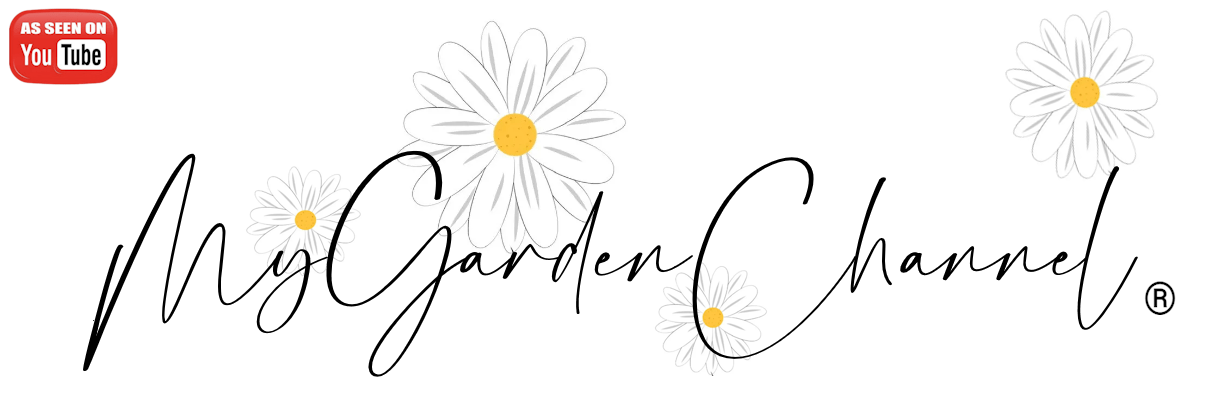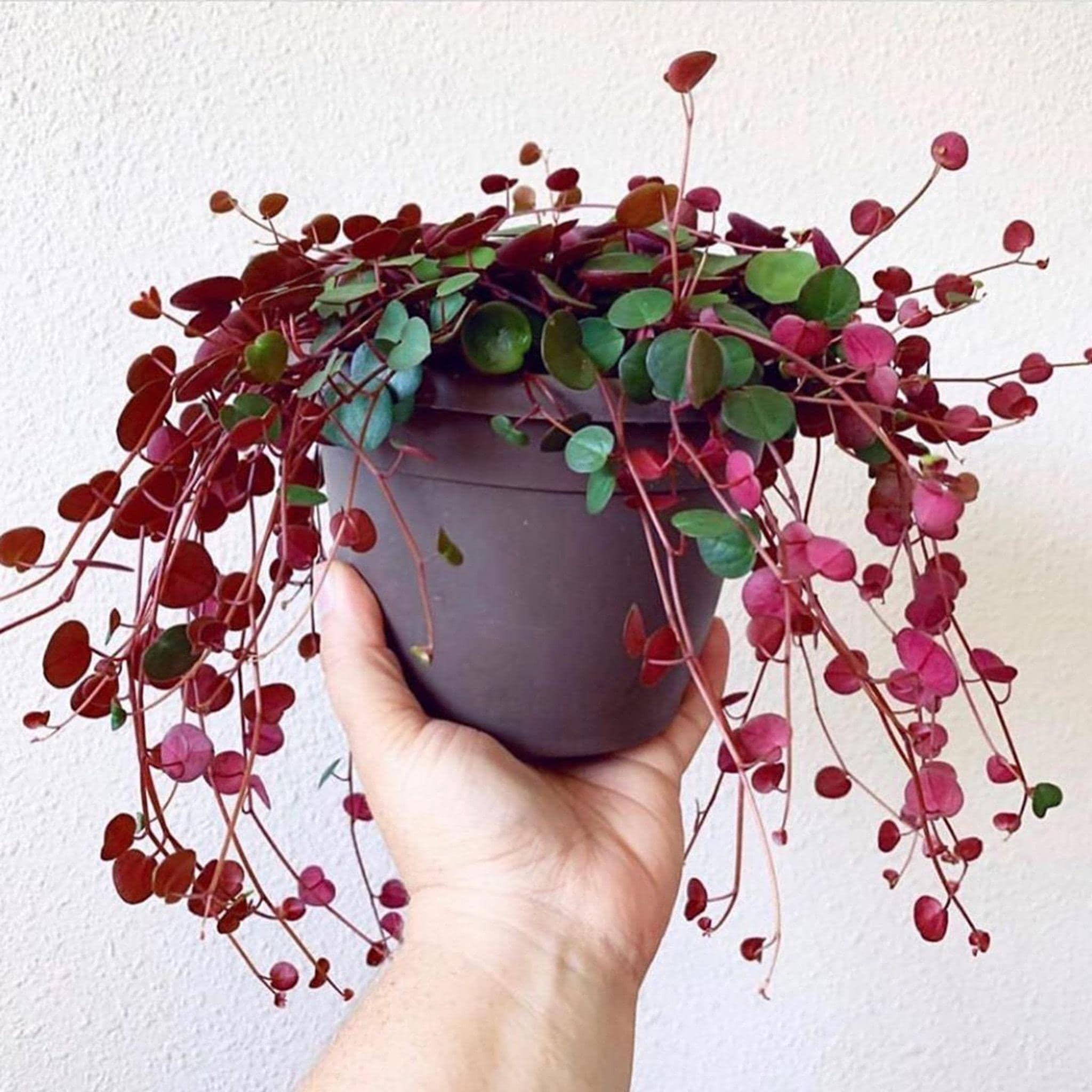The Ruby Cascade Peperomia (Peperomia rotundifolia ‘Ruby Cascade’) is a striking variety of peperomia known for its vibrant, cascading foliage and unique coloration. This tropical succulent is admired for its compact size, easy care, and the dramatic beauty of its deep ruby-red stems and round, green leaves. Perfect for adding color to hanging baskets, planters, or shelves, this plant thrives in indoor environments, making it an excellent choice for houseplant enthusiasts.
In this guide, we’ll cover all aspects of growing and caring for the Ruby Cascade Peperomia to ensure it thrives in your home.
1. Overview of Ruby Cascade Peperomia
Peperomia rotundifolia ‘Ruby Cascade’ is a trailing variety of peperomia that forms small, round, fleshy leaves on thin, red stems. The unique feature of the ‘Ruby Cascade’ is its cascading growth habit, which makes it ideal for hanging planters or elevated surfaces where it can spill over and create a stunning visual effect. The plant is non-toxic to pets, making it a safe choice for households with animals.
- Plant Type: Evergreen, trailing succulent
- Height: Typically grows to around 12-18 inches (30-45 cm) in length but can trail much longer in ideal conditions.
- Leaf Color: The leaves are deep green with a slight silvery or reddish hue depending on light exposure.
- Stem Color: Ruby-red or burgundy stems, which contrast beautifully with the leaves.
- Flowering: Ruby Cascade Peperomia may occasionally produce small, inconspicuous flowers, but the leaves are the primary feature of interest.
- Hardiness Zone: Grows well in USDA zones 10-12 as a houseplant.
- Toxicity: Non-toxic to pets and humans.
2. Choosing the Right Location
Ruby Cascade Peperomia thrives indoors, especially in bright, indirect light. Here’s how to choose the best location:
- Light: Provide bright, indirect light for optimal growth. Direct sunlight can scorch the leaves, causing them to fade or become crispy. If you place the plant near a window, a sheer curtain can help diffuse the light. While it can tolerate lower light conditions, the plant may grow more slowly and may lose some of its vibrant coloration.
- Temperature: Ruby Cascade Peperomia prefers temperatures between 65-80°F (18-27°C). It does not tolerate cold drafts or temperatures below 50°F (10°C), so avoid placing it in areas with sudden temperature fluctuations, like near doors, windows, or air conditioners.
- Humidity: Being native to tropical regions, this plant enjoys humidity. It will thrive in a humid environment but is relatively adaptable to average indoor humidity. To increase humidity, you can mist the plant occasionally or place it on a humidity tray (a shallow tray filled with water and pebbles).
3. Soil Requirements
The Ruby Cascade Peperomia prefers well-draining, slightly acidic to neutral soil. It’s important to choose the right soil mixture to prevent root rot, which can occur if the soil retains too much moisture.
- Soil Type: A well-draining potting mix, such as a cactus or succulent mix, works well for Ruby Cascade Peperomia. You can also mix regular potting soil with perlite or sand to improve drainage.
- Container: Ensure your pot has drainage holes to prevent water from accumulating at the bottom, as peperomias are sensitive to root rot.
4. Watering Ruby Cascade Peperomia
Watering is one of the most important aspects of caring for the Ruby Cascade Peperomia. Overwatering is a common mistake that can lead to root rot and other issues.
- Watering Schedule: Water the plant when the top 1-2 inches (2.5-5 cm) of soil are dry. In general, this may mean watering every 7-10 days, but it depends on your environment (humidity, temperature, etc.). During the winter months, the plant’s growth slows down, so you may need to water less frequently.
- Watering Technique: Water thoroughly until water drains out of the bottom of the pot. Avoid letting the plant sit in standing water, as this can lead to root rot. Ensure that the soil is evenly moist but never soggy.
- Signs of Overwatering: Yellowing leaves, mushy stems, or a musty smell from the soil are signs of overwatering. If this happens, allow the soil to dry out completely before watering again. If the roots are rotting, you may need to trim them and repot the plant in fresh soil.
5. Fertilizing Ruby Cascade Peperomia
Peperomias are not heavy feeders but will benefit from occasional feeding to promote healthy growth.
- Fertilizer Type: Use a balanced, water-soluble fertilizer (such as a 10-10-10 NPK) diluted to half strength. This will provide essential nutrients without overfeeding.
- Fertilizing Schedule: During the growing season (spring and summer), fertilize once a month. In the fall and winter, when the plant is in a dormant phase, reduce or stop fertilizing altogether.
6. Pruning and Maintenance
Ruby Cascade Peperomia is relatively low-maintenance, but some light pruning and care will keep it looking tidy and encourage fuller growth.
- Pruning: Trim back any leggy or damaged growth to encourage branching and a fuller appearance. If the plant is trailing too far, you can pinch back the growing tips to promote bushier growth. Regular pruning will help the plant maintain its cascading form.
- Cleaning Leaves: Dust can accumulate on the thick, fleshy leaves, reducing their ability to photosynthesize. Use a damp cloth or a soft brush to gently clean the leaves. This also helps prevent pest infestations.
7. Propagation of Ruby Cascade Peperomia
Ruby Cascade Peperomia can be propagated easily by stem cuttings. Here’s how to do it:
- Stem Cuttings: Take a cutting from the plant that includes a node (a small bump where the leaf attaches to the stem). Trim the cutting just below the node.
- Rooting the Cutting: Place the cutting in a glass of water, ensuring that the node is submerged but the leaves remain dry. Change the water every couple of days. Within a few weeks, the cutting should develop roots.
- Transplanting: Once the roots are a few inches long, transplant the cutting into a small pot with well-draining soil. Keep the soil lightly moist until the plant establishes itself.
8. Common Pests and Problems
Ruby Cascade Peperomia is relatively pest-resistant, but it can sometimes be affected by a few common houseplant pests.
- Mealybugs: These white, cotton-like pests can be found in the crevices of the plant. Treat them with insecticidal soap or a cotton swab dipped in rubbing alcohol.
- Aphids: Aphids may occasionally appear on the undersides of the leaves, sucking sap. If you notice them, gently wash the plant with a strong spray of water or use insecticidal soap.
- Spider Mites: These tiny pests are hard to see but may cause the leaves to look speckled or discolored. Increase humidity around the plant and treat with insecticidal soap if needed.
- Leaf Spotting or Yellowing: This can be caused by overwatering or fungal issues. Allow the soil to dry out between waterings and ensure the plant has good air circulation.
9. Troubleshooting Common Issues
- Yellowing Leaves: This could be a sign of overwatering or insufficient light. Adjust your watering routine and move the plant to a brighter location if needed.
- Wilting or Drooping Leaves: Wilting can occur if the plant is underwatered or if the soil has dried out completely. Check the soil and water the plant if needed.
- Leaf Curling: This may be due to low humidity or pest problems. Increase humidity and inspect the plant for pests.
10. Conclusion
Ruby Cascade Peperomia is an elegant and easy-to-care-for houseplant that can add a touch of greenery and color to your home. With its cascading growth, vibrant red stems, and attractive foliage, it makes a great addition to any indoor plant collection. By providing it with the right care — from proper watering and lighting to occasional pruning and pest management — you can enjoy this beautiful plant for years to come. Whether displayed in a hanging basket, on a shelf, or in a planter, the Ruby Cascade Peperomia will thrive with minimal attention and reward you with its stunning beauty.


